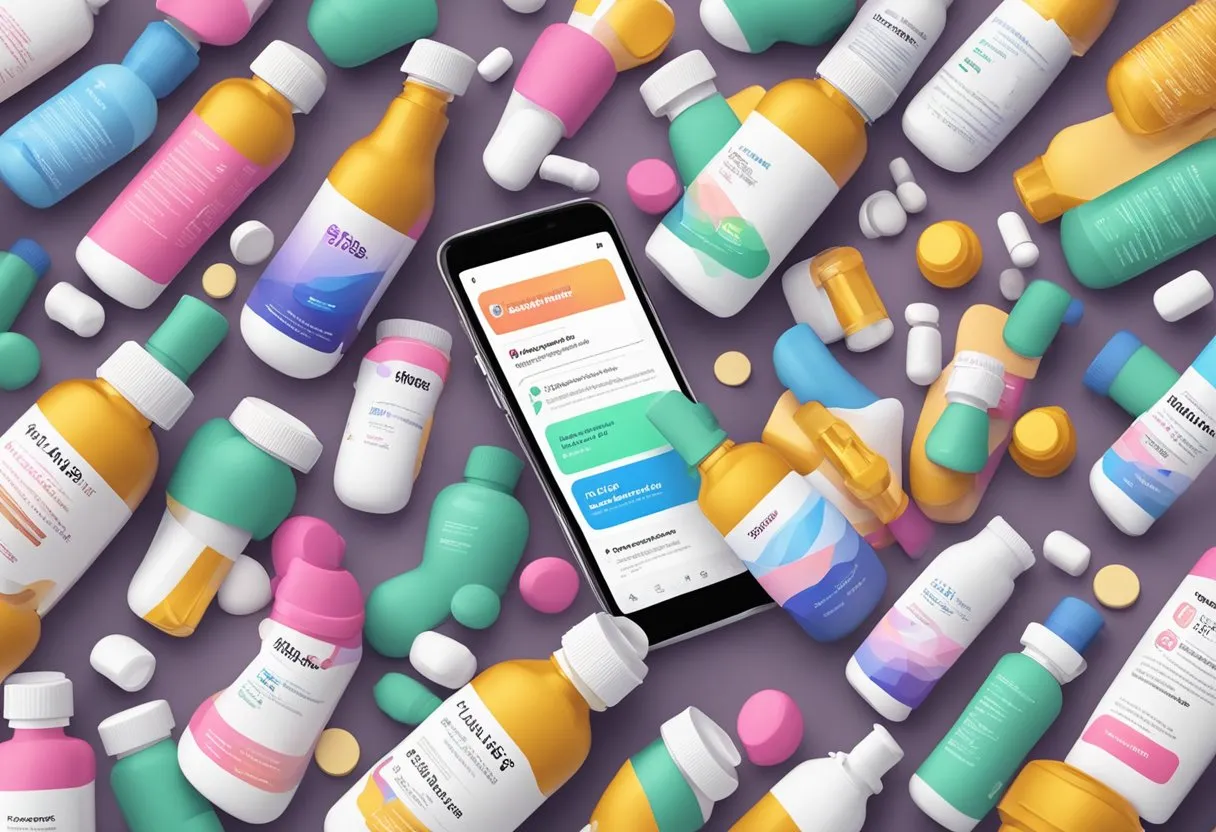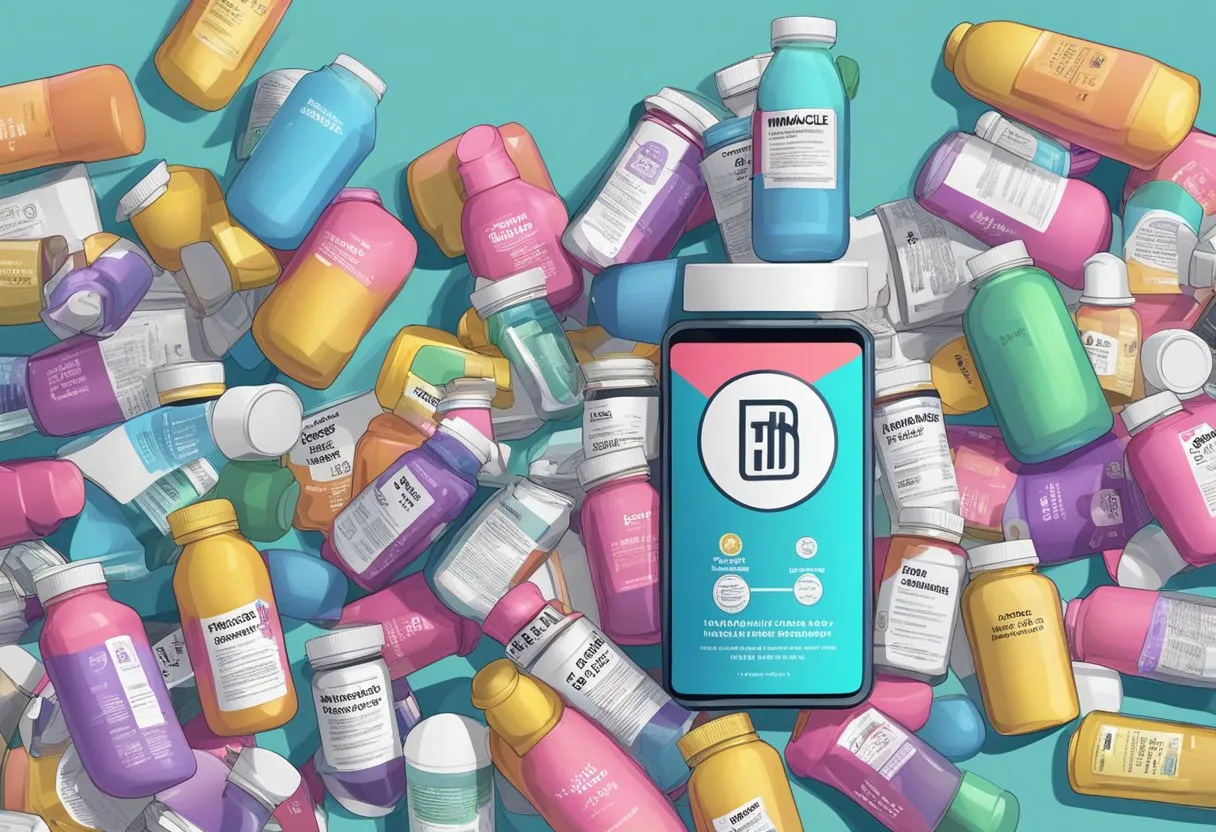17 TikTok Ad Failures in Supplements and How to Fix Them
TikTok advertising for supplements can be a tricky landscape to navigate. Advertisers face unique challenges that can hinder their campaigns, from ad reviews and grammar mistakes to payment issues. Many brands struggle to understand why their ads aren’t performing as expected or even getting approved.

This article outlines 17 common failures in TikTok ads for supplements and provides actionable solutions to improve ad performance. By identifying these pitfalls and learning how to fix them, businesses can better align their strategies and achieve more successful advertising outcomes.
1. False Health Claims

TikTok has become a hotbed for misleading health claims. Many accounts promote unproven treatments for serious conditions like cancer, liver failure, and other ailments. These claims often lack scientific backing and pose serious risks to public health.
False health claims can mislead users into trying dangerous or ineffective products. For example, some supplements touted on TikTok promise impossible results for weight loss or skin care.
These misleading ads exploit vulnerable individuals who may desperately seek solutions for their health issues. Users often trust these ads more because they misuse images of healthcare workers, giving a false sense of credibility.
Regulatory oversight on TikTok is inconsistent. While the platform has policies against deceptive practices, enforcement is weak. As a result, many unverified health claims slip through the cracks, endangering users.
The U.S. Food and Drug Administration (FDA) has received numerous complaints about misleading drug ads on social media. Despite this, many ads on TikTok still go unchecked.
To tackle these issues, TikTok must enforce stricter guidelines for health-related content. Authorities like the FDA need to increase monitoring and take swift action against false claims to protect consumers.
For more insights on the misuse of images in health ads on TikTok, you can refer to Market Realist’s coverage.
2. Misleading Before and After Photos

Many supplement ads on TikTok use misleading before and after photos. These images often show dramatic transformations that suggest the product is highly effective.
In reality, these photos can be altered or staged. Lighting, angles, and even digital enhancements can create unrealistic results. This deceptive practice can fool viewers into buying products that may not work as advertised.
TikTok’s policies prohibit such misleading content, but enforcement is inconsistent. Influencers and sellers continue to post these manipulated photos, undermining trust in the platform.
Consumers should be aware of these tactics. Look for reputable sources and verified reviews rather than relying on dramatic before and after images. TikTok must also improve its monitoring to reduce the spread of deceptive ads.
By understanding these practices, users can make more informed decisions about the supplements they choose to buy. TikTok should ensure its guidelines are clear and consistently enforced to protect users from being misled.
For more details, see this article on how doctors’ and nurses’ photos are misused to sell supplements.
3. Overly Dramatic Results

Many TikTok ads for supplements promise results that seem too good to be true. Claims like “lose 10 pounds in a week” or “clear your skin overnight” are common but misleading. These exaggerated promises can create unrealistic expectations.
Accurate and realistic claims are essential for building trust with the audience. Ads should highlight real, achievable benefits of using the supplements. For example, saying “supports healthy weight loss” or “may improve skin appearance” is more credible.
TikTok’s policies already warn against promoting a harmful body image through these ads. Yet, the algorithm still pushes many such ads, which can be harmful. For more information, check Rolling Stone’s article on TikTok’s weight loss ad issues.
Advertisers should focus on being transparent and honest in their messaging. Using testimonials from real users who have experienced modest improvements can help. Also, mentioning clinical study results, if available, can add credibility.
Avoiding exaggerated claims can also help in complying with TikTok’s advertising policies. Ads that fail these guidelines may not get approved or could be taken down. Following these guidelines can lead to better audience engagement and trust.
4. Unverified Customer Testimonials

One major issue in TikTok supplement ads is the use of unverified customer testimonials, which can mislead buyers. These testimonials often feature exaggerated or fabricated claims about the product’s effectiveness. This practice not only misguides consumers but also undermines the trust in genuine reviews.
Without proper verification, testimonials can come from anyone, including people paid to write positive reviews or even bots. This makes it difficult to discern which reviews are honest. Platforms like TikTok need better measures to filter out these false testimonials and ensure authenticity.
Additionally, some ads use images of healthcare workers without consent, giving a false impression of credibility. Exploiting healthcare workers’ images for marketing purposes is problematic and unethical. To explore this, you can read more on Market Realist.
To build trust, brands should encourage genuine customer feedback and avoid manipulating reviews. This can be achieved by implementing verified purchase badges and conducting regular audits of customer testimonials. Ensuring transparency in advertising practices can help maintain consumer confidence and provide a more honest assessment of product effectiveness.
5. Using Non-Industry Experts

Many TikTok ads for supplements use influencers who have no background in health or nutrition. This can lead to misinformation and confusion for consumers.
Brands often choose popular influencers over qualified professionals to reach a larger audience. While this strategy might increase visibility, it risks spreading inaccurate health advice.
Influencers are perceived as authentic, but without proper knowledge, their recommendations can be harmful. They may lack the expertise to understand the implications of the products they promote.
Using non-industry experts can undermine the credibility of the brand. Consumers might lose trust if they realize the influencer lacks relevant qualifications.
To improve, brands should collaborate with healthcare professionals. This ensures that the information shared is accurate and trustworthy. This practice can enhance the brand’s reputation and protect consumer health.
Increasing the use of qualified experts in ads can foster better consumer trust. It aligns the brand with a commitment to accurate health advice and safety. Brands should prioritize expertise over popularity to ensure responsible marketing of supplements.
6. Exaggerating Supplement Benefits

Many TikTok ads exaggerate the benefits of supplements. They claim quick fixes for complex health issues. This misleads users into thinking supplements are miracle cures.
Healthcare workers’ images are often misused to lend credibility to these exaggerated claims. This can erode trust in genuine medical advice.
Enforcing stricter regulations on ad content is essential. TikTok’s policies against deceptive practices need consistent application. Users should be able to rely on the platform for accurate information.
Educational initiatives can also help. Informing users about the realistic benefits and potential risks of supplements can reduce the impact of exaggerated claims. Accurate labeling and disclaimers in ads are vital.
Social media influencers must be held accountable. Authenticity should not come at the cost of truth. Influencers should prioritize sharing verified, science-backed information.
7. Neglecting FDA Compliance

One of the major failures in TikTok supplement advertising is neglecting FDA compliance. Advertisers frequently promote supplements without following the required guidelines, leading to potential risks for consumers.
Advertisements often fail to provide necessary warnings about potential side effects. This lack of transparency can mislead consumers into believing supplements are safer than they might actually be.
Many influencers lack proper training about FDA rules. They may unknowingly make unapproved health claims, suggesting that a supplement can cure or treat certain diseases. This is a direct violation of FDA regulations.
Since 2016, the FDA has received numerous complaints about misleading drug ads on social media platforms. This indicates ongoing issues with compliance and highlights the need for stricter oversight.
Senators have urged the FDA to fix weaknesses in its oversight of social media ads. They argue that current gaps allow advertisers to exploit the platform, which can harm consumers, especially vulnerable groups like children and patients.
The lack of enforcement allows potentially harmful products to be marketed freely. This neglect creates a significant public health risk and underscores the importance of adhering to FDA guidelines.
Strengthening regulations and increasing awareness among influencers about FDA compliance can help mitigate these issues. Ensuring all ads provide clear, accurate information can protect consumers from misleading or dangerous claims.
8. Overstating Clinical Studies

Many supplement ads on TikTok cite clinical studies to appear credible. These ads often highlight the positive results while ignoring limitations and negative outcomes. This practice misleads viewers by overstating the benefits.
Sometimes, the studies mentioned are small-scale or lack proper controls. In these cases, the findings are not widely accepted within the scientific community. This makes the claims appear stronger than they are in reality.
Another common issue is misrepresenting the scope of the study. For example, an ad might claim a supplement helps with weight loss based on a study that only involved a small group of people. This exaggeration can lead to false consumer expectations.
One way to fix this is by presenting balanced information. Ads should mention the scale of the study and its limitations. This will help viewers make more informed decisions.
Marketers should also ensure that the studies they reference are peer-reviewed and widely accepted. This can prevent the spread of misinformation and maintain trust with the audience.
Addressing these issues can help make TikTok a more reliable platform for health information and reduce the risk of misleading consumers.
9. Ignoring Target Audience

One of the biggest mistakes in TikTok advertising for supplements is not understanding the target audience. Marketers often fail to tailor their ads to the preferences and interests of TikTok users.
On TikTok, the majority of users are young. Brands must create content that resonates with this demographic to avoid low engagement and wasted ad spend (TikTok Advertising Mistakes).
Using overly broad targeting settings can also backfire. Ads that aim too wide may not effectively reach the most interested users, leading to higher costs and lower conversion rates (Audience Targeting Best Practices).
Creating custom audiences based on past interactions, such as website visits or previous campaigns, can help address this issue. Marketers should leverage tools like custom and lookalike audiences to refine their targeting strategy (How to connect with your target audience on TikTok).
Tailoring content and targeting strategies to the specific interests and behaviors of the target audience is crucial. This helps ensure that the ads are engaging and effective.
10. Inappropriate Hashtags

Inappropriate hashtags can mislead users and promote harmful content. On TikTok, some hashtags attract attention but aren’t safe. For example, the platform has struggled to moderate hashtags linked to eating disorders, which can influence young users negatively.
Some brands misuse hashtags to push their supplements. They attach trending but unrelated hashtags to their posts, confusing and misleading the audience. This misuse can be harmful, especially when hashtags promote unrealistic body images or unhealthy practices.
To fix this, TikTok needs stricter rules on hashtag usage. Banning hashtags that promote harmful content will protect users. TikTok should also educate creators and brands on the importance of responsible hashtag usage. Encouraging positive and relevant hashtags can promote a healthier environment.
Finally, consistent monitoring and swift action are crucial. TikTok can use algorithms to detect inappropriate hashtags and take them down quickly. This approach helps in maintaining a safe and trustworthy platform for all users.
For instance, TikTok banned certain hashtags related to eating disorders to curb negative content. This move shows that monitoring and enforcing rules can effectively tackle the misuse of hashtags.
11. Inconsistent Brand Voice

A consistent brand voice is essential for building trust and recognition. When the tone and style of messaging vary too much, it can confuse the audience.
Inconsistent brand voice can turn away potential customers. They may feel disconnected from the message and doubt the brand’s credibility. This is especially critical for supplement brands on TikTok.
To maintain consistency, brands should define their voice clearly. This involves outlining specific tone, language, and imagery that fits the brand’s personality.
Regular training for content creators can help. It ensures that everyone involved understands and adheres to the brand guidelines. This can prevent variations that cause mixed messages.
Monitoring content regularly is also vital. Brands should review their TikTok posts to ensure they align with the established voice.
Engaging with the audience in a consistent manner helps build a strong community. Responding to comments, creating follow-up videos, and maintaining the same tone in all interactions are key.
Brands like those in pet supplies maintain a fun and friendly tone across all videos to resonate with pet owners. This approach can be adapted for supplements, focusing on health and wellness.
Clear, consistent messaging reinforces the brand’s identity. It’s a crucial step for gaining and retaining customer trust on a platform like TikTok.
12. Poor Video Quality

Poor video quality can ruin a TikTok ad and affect the credibility of a supplement brand. Blurry, pixelated, or compressed videos do not catch the viewer’s eye and may lead to lower engagement.
To fix this issue, ensure the video resolution is at least 1080p. TikTok supports higher resolutions, but 1080p is a reliable choice for clear, sharp visuals.
Watch out for TikTok’s compression settings. Videos often lose quality during upload due to automatic compression. Adjust video settings to minimize this effect.
Turn off any data saver settings in the TikTok app, which can limit the upload quality. Faster internet speeds during the upload process can also reduce issues.
If videos appear blurry after recording, check the camera settings on your device. Use at least 30 frames per second (fps) to improve the clarity of motion in the video.
Ensure that the app has permission to upload in HD. This setting is often missed but can significantly impact video quality. A stable camera setup can also help avoid shaky footage that degrades quality.
13. Lack of Engaging Content

One common issue with TikTok ads for supplements is a lack of engaging content. TikTok’s users expect creative and entertaining videos. Ads that fail to capture this spirit can lead to poor performance.
To make ads more engaging, supplement brands should use eye-catching visuals and lively music. Adding humor or surprising elements can also help grab attention.
Using real stories or testimonials can create a sense of authenticity. Users are more likely to trust and engage with content that feels genuine.
Brands should also take advantage of TikTok’s unique features like duets, filters, and effects. These tools can make the ad more dynamic and interactive.
Keeping the message short and to the point is crucial. Users quickly scroll through their feed, so the main point should be clear within the first few seconds.
For more tips on improving TikTok ads, check out the TikTok Marketing Guide.
14. Misusing Influencers

Brands sometimes misuse influencers by promoting supplements without proper evidence of their effectiveness. Influencers may exaggerate or make false claims about the benefits of a product to attract attention.
This misuse can lead to misinformation. Followers trust influencers and may end up buying products that do not work or are potentially harmful.
TikTok is a platform where this misuse is prevalent. For example, there are cases where influencers have stolen photos of doctors and nurses to lend credibility to their posts.
Also, some influencers do not disclose that their posts are paid advertisements. This secret advertising can mislead consumers into thinking the recommendations are genuine and unbiased, which is a common problem.
Misusing influencers runs the risk of undermining public trust. When people learn that influencers promote products without credible backing, they are likely to be skeptical of genuine recommendations in the future.
Furthermore, brands should ensure influencers disclose sponsorships clearly. TikTok needs to enforce stricter guidelines to prevent the misuse of healthcare workers’ images and unverified claims. These steps can help restore consumer trust and ensure that supplement promotions are responsible and trustworthy.
15. Skipping User Interaction
Many TikTok ads for supplements fail due to a lack of user interaction. On TikTok, engagement is key. If users don’t interact with an ad, it’s likely to be overlooked.
Engagement includes likes, comments, shares, and even watching the video to the end. Ads need to be designed with these goals in mind. Making the content relatable or entertaining can drive more interaction.
Using interactive elements like polls, questions, or challenges can also boost engagement. These elements invite users to act rather than passively watch, increasing the chances they’ll get involved with the ad.
Including a clear call to action (CTA) can guide users on what to do next. Whether it’s sharing their thoughts in the comments or participating in a challenge, a well-placed CTA can significantly impact engagement.
Finally, promptly responding to comments and interactions can further encourage user participation. It shows that the brand values user input and is willing to engage back, creating a more interactive and dynamic ad experience.
Skipping user interaction is a missed opportunity to connect with the audience and improve ad performance on TikTok.
16. Neglecting Proper Disclosures
Many TikTok influencers fail to properly disclose when an ad is paid.
The Federal Trade Commission (FTC) requires clear and conspicuous disclosures. Simply putting “ad” or “#ad” in a description might not be enough.
One issue is that disclosures can be hidden or too small to notice.
Even if the ad appears in video form, it must clearly show the relationship between the influencer and the brand.
The FTC has sent warning letters to influencers and trade associations to enforce these rules. Proper disclosure ensures that consumers make informed decisions.
Without proper disclosures, consumers may face misleading claims.
Influencers and brands should follow FTC guidelines to avoid penalties and maintain trust.
17. Ignoring Competitor Analysis
Many supplement brands fail because they don’t analyze their competition. Skipping this step means missing out on valuable insights. Competitor analysis helps identify which strategies work and which don’t.
Using tools like GoodsFox or Metricool can provide detailed information about competitors’ TikTok ads. This can guide brands in refining their own campaigns.
Without competitor analysis, brands might waste money on ineffective ads. They might also miss trends and opportunities that competitors are capitalizing on.
Analyzing competitors also means understanding their performance metrics. Knowing how well competitors’ ads perform can set benchmarks for your own campaigns. Utilize platforms like Keyhole to track and analyze these metrics.
Ignoring competitors can lead to repetitive content. By analyzing competitors, brands can create unique content that stands out. This leads to better engagement and higher conversion rates on TikTok.
Understanding TikTok Ad Failures
When it comes to TikTok ad failures, several common issues arise.
One major problem is using sexual or shocking content. Ads showing suggestive scenes or gruesome images can fail review. These types of content violate TikTok’s advertising policies.
Another frequent issue is ads for weight loss products. TikTok bans ads for fasting apps and weight loss supplements. They also impose strong restrictions on ads making weight loss claims, as found here.
Grammar mistakes can also lead to ad rejections. Errors like spelling mistakes or using symbols in place of letters are common reasons ads fail. For example, TikTok disapproves of ads using text like “S@le” or “rfom” instead of “from,” mentioned here.
Additionally, excessive capitalization and text covered by stickers can make ads fail. Using too much capitalization or having text that’s hard to read due to stickers or mosaics should be avoided.
Lastly, following TikTok’s ad approval process can seem meticulous. Many advertisers find it frustrating, but understanding and adhering to the guidelines is essential to success. Detailed issues with this process can be read here.
Failing to follow these guidelines results in rejected ads. Advertisers must pay close attention to these common pitfalls to ensure their campaigns run smoothly.
Identifying Common Mistakes
Understanding the pitfalls in TikTok advertising can help marketers create more successful campaigns. Common issues include misleading claims, incorrect targeting, and using low-quality creatives.
Misleading Claims
Ads should always accurately represent the product. Misleading claims can lead to customer distrust and legal issues. For example, promoting a supplement as a miracle cure without scientific backing can damage a brand’s reputation.
Clear, truthful descriptions of a supplement’s benefits are essential. Avoid superlative language like “best” or “fastest.” Instead, detail specific benefits and back them up with research. This builds credibility and trust with the audience.
Using customer testimonials in ads can also be tricky. Ensure that testimonials are genuine and not exaggerated. Authenticity in advertising fosters long-term customer relationships.
Poor Targeting
Accurate targeting is crucial for reaching the right audience. Poor targeting wastes ad spend and fails to reach potential customers. It’s important to understand TikTok’s user demographics and tailor ads accordingly.
Supplements should be marketed to users based on their specific needs and interests. For instance, targeting fitness enthusiasts for a protein supplement yields better results than broad targeting.
Additionally, using TikTok’s native tools, like interest targeting and custom audiences, can refine the reach. This ensures that ads are seen by those most likely to be interested in the product, improving engagement and conversion rates.
Low-Quality Creatives
Creativity in ad production affects engagement. Low-quality visuals or poorly structured content can deter potential customers. High-quality creatives are essential for capturing attention in TikTok’s fast-paced environment.
Professional design and clear, concise messaging improve ad performance. Use vibrant colors and strong visuals to stand out. Ensuring sound quality and syncing it well with visuals can also enhance the user experience.
Regularly refreshing ad content to keep it relevant is critical. Stale or repetitive ads fail to engage viewers. Testing different formats and styles provides insight into what resonates best with the audience, leading to more effective campaigns.
This approach will help mitigate common pitfalls in TikTok advertising for supplement brands.
Effective Strategies for Improvement
To correct common TikTok ad failures in the supplements industry, focus on clear messaging, targeted audience selection, and standout visuals. These key areas can significantly enhance the effectiveness of your campaigns.
Accurate and Transparent Messaging
Accuracy is critical in supplement ads. Misleading claims not only damage trust but can also lead to regulatory issues. Ensure all health benefits mentioned are backed by scientific evidence. Transparency about ingredients and their sources builds consumer trust. This includes clearly stating any potential side effects and usage recommendations.
Avoid using vague terms like “miracle cure” or “instant results.” Instead, be specific and realistic about what the supplement can achieve. Providing testimonials from real users can help convey authenticity. Clear and honest messaging reduces the risk of backlash and promotes credibility.
Optimizing Audience Selection
Selecting the right audience is essential for effective TikTok ads. Use TikTok’s audience targeting features to reach users who are most likely to be interested in supplements. This involves demographic targeting based on age, gender, location, and interests.
Custom Audiences allow you to reach people who have interacted with your brand before, while Lookalike Audiences help you find new users similar to your existing customers. Regularly analyze performance data to adjust and refine your targeting. By understanding who engages most with your content, you can tailor ads to better meet their needs.
Enhancing Visual Appeal
High-quality visuals can make or break a TikTok ad. Ensure videos are shot in high definition with good lighting. Show the product in use, highlighting its benefits visually. Use engaging and upbeat music to catch the viewer’s attention.
Incorporate clear text overlays to emphasize key points, but keep them concise. Bright colors and dynamic editing can make your ad stand out in a user’s feed. Visual consistency is also important; maintain a cohesive look that aligns with your brand identity. Investing in strong visuals not only attracts attention but also delivers your message more effectively.
For more tips on improving engagement, check out this guide on leveraging User-Generated Content on TikTok.
Frequently Asked Questions
This section addresses common issues that can arise when advertising supplements on TikTok, including payment problems, ad underperformance, and campaign cancellations. It also provides guidance on disputing rejections and obtaining refunds.
How can I resolve payment method issues when setting up TikTok ads for supplements?
First, ensure your payment method is valid and has sufficient funds. Check if the payment information entered correctly matches the billing details. If the issue persists, contact TikTok Support for assistance.
What steps should I take if my TikTok ad payments are getting declined?
Verify that your credit card or bank account has enough funds. Ensure that the card is not expired and is authorized for online transactions. You may also need to reach out to your bank to confirm there are no blocks on the card.
Why might my TikTok ad for supplements be underperforming and how can I improve it?
Your ad might be underperforming due to unappealing visuals, unclear messaging, or targeting the wrong audience. Improve performance by using high-quality images, clear and compelling text, and targeting the right demographic. Avoid misleading before and after photos and overly dramatic results.
What are the common reasons for TikTok ad campaign cancellations and how to prevent them?
Campaigns can be canceled due to policy violations, such as false health claims or unverified testimonials. Ensure your ads comply with TikTok’s advertising policies to prevent cancellations. Always use verified, truthful information in your ads.
How to effectively dispute and overcome TikTok ad rejections for supplement promotions?
If your ad is rejected, review the rejection reason provided by TikTok. Correct any issues, such as inaccurate health claims or inappropriate content. Resubmit the ad for review. If you believe the rejection was in error, you can submit an appeal.
What is the process for obtaining a refund from an unsuccessful TikTok supplement ad campaign?
If your campaign was unsuccessful and you seek a refund, contact TikTok Support. Provide details about the campaign and why you believe a refund is justified. TikTok’s team will review your request and inform you of the next steps.